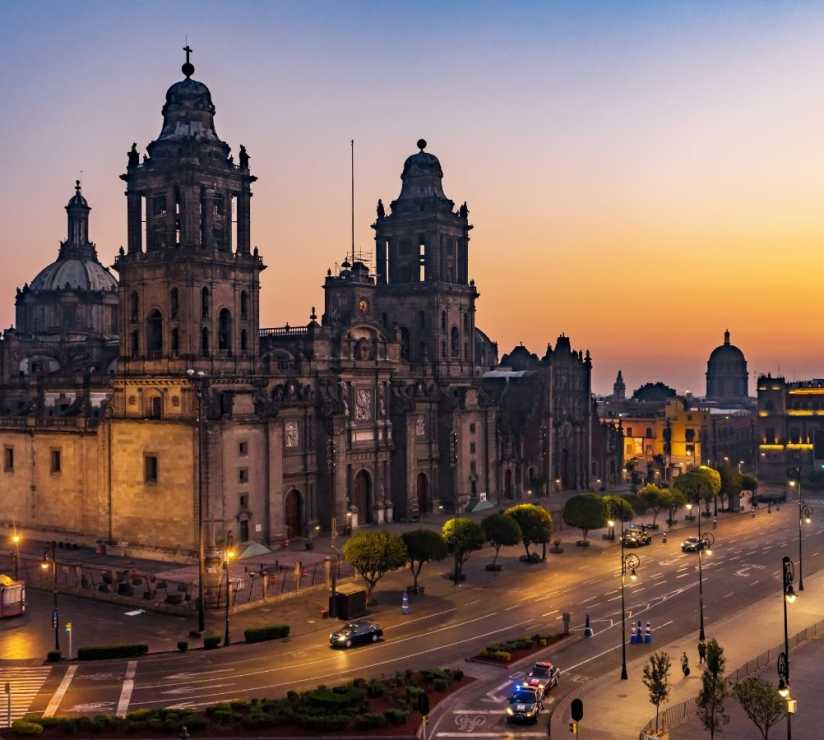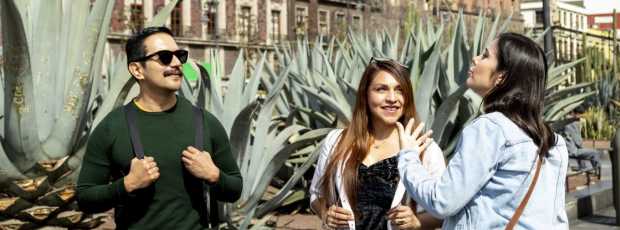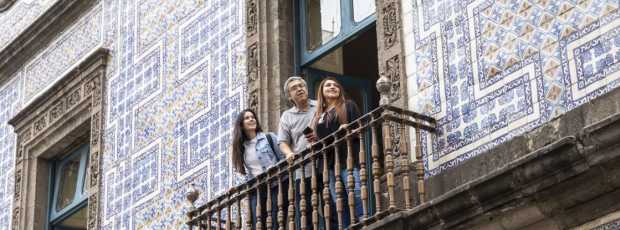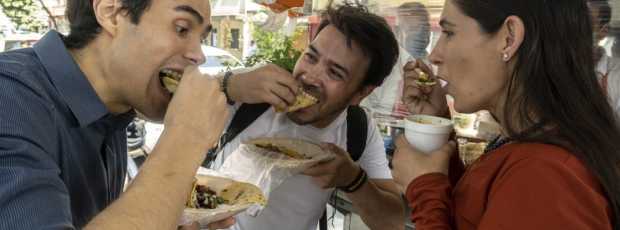Table Of Contents
- The Ancient Heart: Centro Histórico's Layered Stories
- Art That Lives Beyond Museums
- Neighborhoods Where Life Happens
- Chapultepec: Green Lung and Cultural Heart
- Food That Tells Stories
- Beyond Tourist Trails: Hidden Discoveries
- Architecture: Stories Buildings Tell
- Understanding Mexico City's Rhythm
- Making Mexico City Yours
- The Mexico City That Stays With You
I often get asked about things to see in Mexico City. I have spent three decades walking these streets, and I know this isn't a place you simply "see." It's a place that sees you back, pulling you into rhythms of vendors calling wares and church bells marking time over ancient stones.
I was born near Doctores, raised on my grandmother's stories about when this valley had canals. I now live in Roma Norte working as a cultural consultant. Ciudad de México has over 20 million people, yet feels intimate when you know where to look.
The truth about Mexico City experiences is that magical moments happen between "must-see" attractions. Yes, stand in the Zócalo and feel centuries beneath your feet.
But you'll remember the conversation with the churro vendor outside Metropolitan Cathedral, or how light filters through jacaranda trees in Chapultepec Park when families spread blankets and grandmothers teach children to dance.
The Ancient Heart: Centro Histórico's Layered Stories
Every morning crossing the Zócalo, I think about walking over Tenochtitlan ruins, the ancient Aztec capital rising from Lake Texcoco waters. Spanish conquistadors built their new city literally atop the Aztec Empire.
Nowhere feels more visceral than Centro Histórico, our UNESCO World Heritage site where pre Hispanic stones peek through colonial facades like memories refusing burial.
The Metropolitan Cathedral dominates the square with baroque towers and tilting foundation, sinking slowly into soft lakebed beneath, like much of central Mexico.
Inside, the Altar of Kings glows with gold that once flowed through these streets. I love it most in early morning when light slants through massive doors and street sweepers move quietly across stones.
Beside the cathedral, Templo Mayor offers powerful encounters with pre-Hispanic past. These actual ruins of Tenochtitlan's main temple, the sacred center where ceremonies connected earth to sky.
The museum houses ancient Mexican artifacts, feathered serpent sculptures, jade masks, obsidian knives still sharp enough to cut. Standing here, you understand Mexico City has always been where sacred and everyday intertwine.
Real magic happens wandering side streets. Calle Moneda curves past colonial mansions with massive wooden doors opening to hidden courtyards.
Madero pedestrian street bustles with musicians and vendors selling elote, corn tasting like summer regardless of season.
Art That Lives Beyond Museums
Mexican culture lives in art moving beyond museum walls. The Frida Kahlo Museum in Coyoacán; La Casa Azul with cobalt walls and painful beauty, still feels alive with her presence, from mirrors above her bed to the kitchen where she and Diego Rivera shared meals and arguments equally.
Diego Rivera's murals at Palacio Nacional tell Mexico's entire history across a massive staircase, from pre-Columbian civilizations through Revolution to modern industry.
I've stood on those stairs with visitors worldwide, watching faces change as they realize they're seeing history painted as political manifesto, love letter, warning.
Palacio de Bellas Artes represents another artistic soul side. This art nouveau masterpiece houses murals by Rivera, José Clemente Orozco, and David Alfaro Siqueiros.
The building gracefully sinks into soft ground like a marble ship, its Tiffany glass curtain catching light like trapped rainbows.
But Mexico City's best art happens on streets. In Roma Norte, murals bloom on building sides, telling contemporary stories of immigration, feminism, environmental justice.
The city government commissions much of this work, understanding art should live where people encounter it daily.
Looking for a private city experience in Mexico City?
Explore the city with a local who plans a private day just for you; no groups, no scripts.
Neighborhoods Where Life Happens
Roma Norte neighborhood survived the 1985 earthquake, preserving art nouveau and art deco architecture like a time capsule of early 20th-century elegance.
Avenida Álvaro Obregón curves under jacaranda trees raining purple petals each spring, sidewalk cafes serving Latin America's best coffee.
Roma Norte is where young chilangos create new culture. Independent bookstores host poetry readings in Nahuatl and Spanish. Galleries showcase artists who couldn't afford Polanco rent.
Restaurants serve elevated street food, al pastor tacos with heritage pork, mezcal cocktails infused with indigenous herbs.
Coyoacán
Coyoacán feels like a colonial town Mexico City grew around rather than absorbed. Cobblestone streets and low buildings create intimate plazas where musicians play for coins.
Weekends bring families citywide for churros, book browsing, children chasing pigeons while parents debate politics over café de olla spiced with cinnamon.
La Condesa
La Condesa curves around Parque México in graceful art deco spirals, offering the city's best people-watching; dog walkers, joggers, couples sharing raspados, old men playing dominos.
On Sundays, it becomes an outdoor gym where yoga meets CrossFit meets tai chi in beautiful chaos.
Chapultepec: Green Lung and Cultural Heart
Chapultepec Park sprawls across 1,600 acres, larger than Central Park. This has been sacred ground since pre-Hispanic times "Chapultepec" means "hill of grasshoppers" in Nahuatl, where Aztec rulers carved portraits into living rock.
Chapultepec Castle is an iconic landmark, it perches on its hill like a fairy tale, serving as royal residence, military academy, and presidential home before becoming a history museum.
From its terraces, see the entire valley spread below, understanding why this spot has always been about power and perspective.
I love Chapultepec best Sunday afternoons when extended families claim grass patches for epic picnics.
Grandmothers unwrap tamales while children chase soccer balls and teenagers practice skateboard tricks. Street vendors weave through crowds selling balloons, fresh fruit with chili and lime, toys that whistle or spin.
Museo Nacional de Antropología
The Anthropology Museum deserves its reputation as one of the world's great museums. The Aztec Calendar Stone commands its own room, surrounded by artifacts tracing sophisticated civilizations flourishing in central Mexico before Europeans arrived.
Whether you take a private tour or a group guided tour, the history of Mexico is awe inspiring.
Food That Tells Stories
When visiting Mexico City, you'll notice that the Mexican cuisine here goes beyond expectations. Yes, incredible street food; al pastor carved from spinning trompos by vendors perfecting knife work over decades, esquites achieving perfect balance between creamy, spicy, tangy.
But Mexico City's food reflects immigration waves shaping our culture. Lebanese immigrants brought shawarma techniques evolving into al pastor.
Jewish refugees opened bakeries still selling the best rye bread south of New York. Chinese immigrants established restaurants serving chop suey alongside mole poblano.
Markets reveal culinary soul most honestly. Mercado de San Juan specializes in exotic ingredients, ostrich meat, imported cheeses, fresh seafood from both coasts.
Vendors slice jamon ibérico paper-thin or recommend perfect mole ingredients. Restaurant chefs shop alongside housewives, tasting tradition and innovation intersections.
Mercado Roma represents new generation Mexican food culture. This gourmet food hall brings together creative chefs in spaces feeling more like community centers than commercial ventures.
Eat Baja California oysters at one stall, artisanal ice cream with indigenous ingredients at another.
What if your day in Mexico City was planned by someone who knows it — and you?
City Unscripted matches you with a local host who creates a private experience based on your interests, not a set route.
Beyond Tourist Trails: Hidden Discoveries
The best experiences happen when you're not looking. Take early morning walks through Mercado de Jamaica, where flower vendors create temporary cathedrals of color. Walls of roses, marigolds, lilies perfuming air, reminding that beauty can be everyday currency.
An evening ritual in Plaza de Santo Domingo, where public scribes set up manual typewriters helping people compose love letters, legal documents, formal complaints.
These elderly men represent dying professions but living connections to literacy as public service.
In Xochimilco, floating gardens that once fed Tenochtitlan still produce flowers and vegetables on chinampas, artificial islands built by piling mud until they form fertile growing plots.
Go early on weekday mornings to see farmers tending crops using pre-conquest techniques, working land floating on ancient lake water.
Some of my favorite places exist in margins. Rooftop bars in Centro Histórico offering views of cathedral spires and contemporary skyscrapers.
Bookstores in Roma Norte staying open late, serving wine alongside literary discussions. Parks in residential neighborhoods where families gather for weekend barbacoas.
Architecture: Stories Buildings Tell
A tour guide Mexico City may help you read architecture like history books. Spanish builders used stones from demolished Aztec temples, you can see pre-Hispanic carvings embedded in colonial walls if you know where to look.
Palacio de Bellas Artes represents early 20th-century Mexican ambitions. Marble palace designed by Italian architects but decorated with murals celebrating indigenous culture and revolutionary politics.
The building sinks measurably each year, making it a perfect metaphor for Mexico City existing in constant dialogue between grand aspirations and geological reality.
Art nouveau buildings in Roma Norte showcase Porfiriano Mexico prosperity, when European styles adapted to local materials and climate.
Wrought iron balconies curve like frozen music, stained glass windows filter tropical light into rainbow patterns.
Contemporary chapters include Luis Barragán's houses using color and light creating emotional experiences, walls painted hot pink and electric blue, water features turning courtyards into meditation spaces.
Understanding Mexico City's Rhythm
Living here means understanding time moves differently. "Ahorita" literally "right now" but meaning five minutes to next week, reflects relationships with time prioritizing human connection over rigid scheduling.
You see it in morning rituals of buying fresh tortillas from neighborhood tortillerías, where transactions include asking about family, commenting on weather, discussing local news.
Evening paseo, when families walk through parks not to exercise but to be present in community space.
The city's rhythm includes celebration relationships. Day of the Dead turns the entire city into altars honoring ancestors with flowers, food, stories. Independence Day brings millions to Zócalo for traditional grito ceremony.
But Mexico City celebrates constantly in smaller ways. Daily rituals marking time: morning vendors calling wares, church bells marking hours, evening traffic moving like slow rivers through streets designed for horses.
Tip
We match you with the right host, not just any guide.Want to experience the real Mexico City with someone who lives there?
A fully private experience, planned and led by a local host who tailors the day to you
Making Mexico City Yours
The secret to visiting successfully is understanding you can't see it all, so focus on feeling deeply. Choose one neighborhood and walk it thoroughly rather than racing between distant attractions.
Accept invitations to conversation from vendors, taxi drivers, fellow museum visitors.
Early morning offers the city at its most real. Before 8 AM, see Mexico City waking, vendors setting up stalls, office workers grabbing breakfast tacos, children walking to school in uniform. Light at this altitude has particular quality, thin and clear, making ordinary buildings luminous.
Night brings different magic. Sunset hour "la hora dorada" bathes the entire valley in warm light.
Rooftop bars offer spectacular views, but real shows happen at street level where families emerge for evening strolls and vendors light cart lamps like urban stars.
Consider staying in Roma Norte or Condesa rather than international chains in Polanco. You'll gain immersion in neighborhoods where life happens on sidewalks, walking distance to restaurants, galleries, parks representing contemporary Mexican culture.
While many visitors join Mexico City tours or book a private tour, the most rewarding approach involves patient exploration.
However, if you prefer guided experiences, seek an extremely knowledgeable local guide who can provide deeper cultural context beyond generic routes. A quality guided tour opens doors to experiences taking months to discover independently.
For unique perspectives, some visitors enjoy a hot air balloon ride over the valley at sunrise, seeing how this ancient lakebed city spreads toward mountains in all directions.
The Mexico City That Stays With You
Mexico City doesn't reveal itself quickly, it requires time, patience, and a willingness to be surprised.
The most powerful experiences happen between planned activities; conversations with Metro strangers, street musicians whose voices stop you mid-stride, pedestrian bridge views suddenly showing the entire valley, standing in the queue at the Frida Kahlo museum.
What visitors remember isn't usually famous attractions, though those matter. They remember their first proper al pastor taco, eaten standing at street corners while sauce dripped down chins.
Church bells echoing off colonial walls Sunday morning. The moment they realized Mexico City isn't just destination but living organism, breathing with rhythms of 20 million people creating culture in real time.
Things to see in Mexico City include obvious places; ancient ruins, world-class museums, architectural marvels. But they also include everyday miracles happening when a city this old, complex, vibrantly alive opens itself to visitors willing to pay attention.
In Mexico City, seeing means participating in ongoing creation of one of the world's great cultural centers. History making its mark in your soul. The more you explore, the more you understand the good reason behind being in Mexico City.
This rich culture changes you if you let it. Not through grand gestures but accumulated moments of beauty, complexity, human warmth reminding why people chose to make lives here for over 700 years. This culture and history combination creates experiences that become part of who you are long after leaving.
Ready to plan your perfect day in Mexico City?
Start your experienceWhat if your day in Mexico City was planned by someone who knows it — and you?
City Unscripted matches you with a local host who creates a private experience based on your interests, not a set route.
Want to experience the real Mexico City with someone who lives there?
A fully private experience, planned and led by a local host who tailors the day to you











